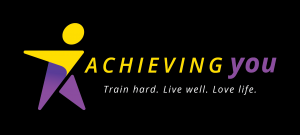Are our training priorities front to back?
Many of us have limited time to spend on our training each week so we tend to focus on the parts of our body we can see in the mirror – arms, chest, abs, hips and thighs. As a result we could be neglecting some of our most important muscles, the ones quite literally around the back – collectively known as the posterior chain. The posterior chain consists of the spinal erector muscles (these sit between the shoulder blades), the lower back, butt and hamstrings.
Training your posterior chain will improve your overall strength and flexibility. It will also help to reduce injury.
When I began training as a PT almost a decade ago, I was taught to incorporate two posterior exercises for every anterior or front exercise. For example: if you include a set of push-ups in your program, it is important to then strengthen the supporting muscle groups in your back with rows or back extensions.
Fast forward to today and our schedules are more chaotic but we are spending more time sitting still. Our commute to the office is longer, we spend hours on our computers and phones. We contort our bodies into weird and wonderful shapes every day. We hunch, slouch and scrunch then wonder why our necks, shoulders, backs and heads ache.
With this in mind I think the time has come to consider increasing the 2:1 ratio. For every front exercise aim for three posterior exercises, or maybe even four.
So how does this affect you?
Take the time to consider the long-term effect of your exercise choices. It is important to train your entire body as it works as a unit, everything is connected. Neglecting certain areas can cause muscle imbalances that affect posture, reduce performance and cause injury.
I love a good burpee / pushup combo as much as the next girl but not if it the cost is a sore neck and difficulty breathing. So I counteract the session by bumping up my posterior chain exercises in those sessions.
If you are a runner, remember it is important to incorporate some strength sessions into your weekly regime. Posterior chain strength will reduce the incident of injury to your knees and lower back.
If you enjoy group fitness classes don’t be afraid to chat to the instructor ahead of the session to get an idea of what you will be doing. This is also a good time to let them know your limitations. At Achieving You, our group fitness classes include all fitness levels and muscle groups. We understand the importance of a balanced work-out. We want our members to be happy, healthy and pain free. We also know our members and what they need. We know for example, that Cathy sits at a desk all day and as result has a sore left shoulder caused by bad posture. She needs to avoid overhead exercises so the instructor gives her an alternative during the class.
The good news
You are probably already doing some of the right exercises without even knowing it. Deadlifts, chin-ups, lat pull-downs, rows and reverse flies are just some of the options when it comes to improving posterior chain strength.
But wait there is more – training your entire body will reduce muscle imbalances. This means your ‘vanity muscles’ such as your biceps, chest and abs will actually look more chiselled and defined. Happy days.
Where to from here?
Make sure your training, whether it is on the road, in the gym or in group fitness class – is helping to keep your posterior chain strong, so you can work and train without pain and injury.
Look after your body so you can work out until you are 100!
Enjoy your training
Janet


